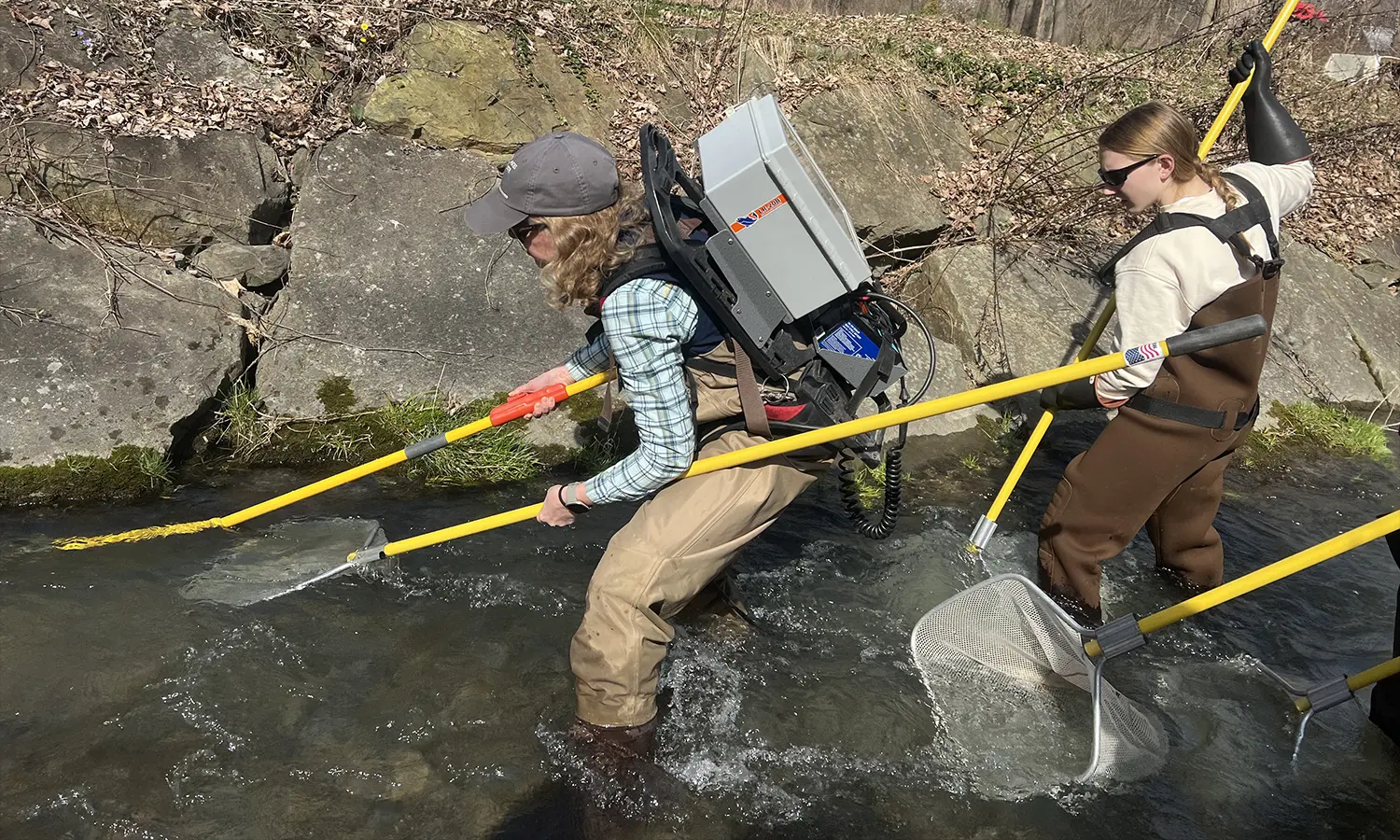
HWS News
10 May 2024 Aquatic Biology Students Take Local Approach
This semester, students in “Aquatic Biology” performed assessments of local freshwater systems taking a deep dive into stream ecology.
In “Aquatic Biology” with Associate Professor of Practice Susan Cushman, students explored freshwater lotic systems and examined the species that inhabit these environments. During lab assignments at Cold Brook and Sugar Creek, both inlets of Keuka Lake, students collected data on various biotic and abiotic components of the local stream systems. They learned how physical, chemical and biological factors regulate aquatic species’ ability to reproduce, adapt and persist.

“The students learned many stream ecology skills while visiting and collecting data at Cold Brook and Sugar Creek. I love bringing awareness to the ecosystem that exists and works below the waters’ surface, especially in small streams in the Finger Lakes region,” says Cushman. “Students learned how to analyze their data and refine their written communication skills by writing multiple manuscript-style lab reports.”
Through labs and classroom lectures, students were introduced to important concepts in stream ecology such as water quality, the river continuum concept and stream restoration. This knowledge equipped them to apply an environmental science lens to ecological theory to better understand both pristine and degraded aquatic ecosystems.
“Sugar Creek and Cold Brook are intriguing sites for comparison because the area surrounding Sugar Creek is dominated by an agricultural landscape, while Cold Brook, a spring fed stream, is more forested,” Cushman explains.
Intending to pursue a career in the environmental sciences, Courtney Swenson ’26 found the course invaluable. “My favorite part of the course was the field labs. It was very enriching to see the things we were learning about in the real world. I loved learning about field methods and procedures while working in the streams. A highlight of the course was electrofishing, this was super cool and a very fun lab day.”
“Aquatic Biology has been a terrific opportunity to further my scientific knowledge while spending time in our beautiful region and developing field skills through local research,” agreed Caroline Gannon ’26, biology major.
As part of their biological, stream habitat and water quality assessments, students performed fish surveys, habitat surveys and benthic macroinvertebrate surveys, statistically comparing the results for similarities and differences. To enhance this assessment, students used a new device that filters water samples to collect environmental DNA (eDNA). The analysis of eDNA is a new method for studying biodiversity, especially of rare and invasive species that are difficult to detect. The species detected from eDNA on these filters were compared to the traditional field methods utilized in field labs to confirm the fish communities in these streams.
Geoscience major and biology minor Ryan Teiper ’25 also found the fieldwork beneficial and interesting. “The course provided a unique way of learning about the ecology of our water; it was the perfect meeting between my two paths of study,” he said.
The course culminated in oral presentations in which students reported on different features of the streams and offered recommendations of a native fish species that could be stocked to bolster ecosystem structure and function.



